FIFO vs LIFO: Choosing the Right Inventory Management Method for Your Business
The key element of managing an effective business is inventory management. It ensures that you have the right amount of products on hand to meet customer demand while minimizing costs and maximizing profits. When it comes to inventory management methods, two popular choices are FIFO (First-In, First-Out) and LIFO (Last-In, First-Out). Each method has its advantages and considerations, and deciding on which one to implement a critical one for your business. In this blog post, we will explore the differences between FIFO and LIFO, discuss their pros and cons, and guide how to choose the right inventory management method that aligns with your business goals and objectives. By the end, you will be equipped with the knowledge to make an informed decision that will optimize your inventory management and drive success for your business.
Understanding FIFO (First-In, First-Out) Inventory Method
When it comes to managing inventory for your business, one of the most important decisions you’ll have to make is choosing the right inventory management method. FIFO (First-In, First-Out) and LIFO (Last-In, First-Out) are two often employed strategies. In this section, we’ll focus on understanding the FIFO inventory method.
FIFO is a method that assumes the first items you acquire are the first ones to be sold or used. Simply put, it means that the oldest inventory is sold first, and the newest inventory remains in stock. This method is especially useful for businesses that deal with perishable goods or products with expiration dates, as it ensures that older items are utilized before they become obsolete.
Implementing the FIFO method offers several benefits. First and foremost, it helps maintain product quality and freshness. By selling or using older inventory first, you can reduce the risk of spoilage or obsolescence, ensuring that your customers receive the freshest products. This can enhance customer satisfaction and loyalty, leading to increased sales and repeat business.
Additionally, FIFO can help in accurately valuing your inventory. Since the oldest inventory is assumed to be sold first, the cost of goods sold (COGS) reflects the older, generally lower-priced inventory. This can result in a more accurate representation of the true cost of goods and better financial analysis.
FIFO also promotes efficient inventory management by preventing stockpiling and excess inventory. By selling older stock first, you can maintain a better hold on your inventory turnover rate and avoid unnecessary storage costs or waste.
However, it’s important to note that the FIFO method may not be suitable for every business. It can lead to higher tax liabilities, as it often results in higher reported profits due to the selling of older, lower-cost inventory. Additionally, during periods of rising costs, FIFO may not accurately reflect the current value of your inventory.
Choosing the right inventory management method, whether it’s FIFO or LIFO, depends on various factors specific to your business, such as industry, product characteristics, and financial goals. Understanding the FIFO method is crucial for making an informed decision that aligns with your unique needs and objectives.
Exploring LIFO (Last-In, First-Out) Inventory Method
LIFO method operates on the principle that the most recently acquired inventory is the first to be sold or used. This means that the cost of goods sold (COGS) is based on the most recently acquired inventory, while the older inventory items remain in stock. LIFO is often preferred in industries where the cost of raw materials or goods tends to increase over time.
One of the key advantages of using LIFO is that it can provide tax benefits. Since the cost of goods sold is based on the most recent inventory, which is often acquired at higher prices due to inflation, it can result in lower taxable income. This can be particularly advantageous for businesses operating in high-inflation environments.
Another benefit of using LIFO is that it can help businesses maintain a more accurate representation of their current inventory value. By assigning higher costs to the inventory on hand, the balance sheet reflects the most recent market value of the inventory, which can be useful for financial reporting purposes.
However, it is important to note that LIFO may not be suitable for all businesses. In industries where inventory costs tend to decline over time, such as technology or fashion, the LIFO method may result in distorted financial statements. Additionally, LIFO can create challenges when it comes to inventory tracking and management, as it requires careful record-keeping and tracking of specific inventory batches.
Ultimately, the decision to use LIFO as an inventory management method depends on various factors, including the industry, the cost behavior of inventory, and the financial objectives of the business. It’s crucial to carefully evaluate the pros and cons of LIFO in relation to your specific business needs and consult with a financial advisor or accountant to make an informed decision.
Pros and Cons of FIFO and LIFO
FIFO (First-In, First-Out) and LIFO (Last-In, First-Out). Each method has its own set of pros and cons that businesses should carefully consider before choosing the right inventory management approach.
Starting with FIFO, the biggest advantage is that it ensures older inventory is sold first, which helps prevent the risk of obsolescence. This method is particularly suitable for businesses dealing with perishable goods or products with expiry dates. By selling older inventory first, FIFO can also help maintain product freshness and quality. Additionally, FIFO provides a more accurate representation of inventory costs, as it matches recent purchasing prices with current sales revenue.
However, FIFO does have its downsides. One of the main challenges is the potential for inventory valuation issues during periods of rising costs. Since older inventory is sold first, the cost of goods sold (COGS) may not reflect the current market value, which can impact profitability and financial reporting accuracy. Furthermore, in industries with frequent product updates or technological advancements, FIFO may lead to a buildup of outdated inventory, affecting cash flow and storage capacity.
On the other hand, LIFO has its own set of advantages and disadvantages. LIFO allows businesses to match current inventory costs with revenue, providing a more accurate representation of profitability. This method can be beneficial in inflationary environments, as it results in a higher COGS, which reduces taxable income and potentially lowers tax liabilities.
However, LIFO also has drawbacks. One of the main challenges is the potential for inventory obsolescence, as older inventory remains in stock for longer periods. This can lead to increased holding costs and the risk of having outdated or unsellable items. Additionally, LIFO may not reflect the true cost of inventory, as newer, potentially higher-priced inventory remains in stock.
Ultimately, choosing between FIFO and LIFO depends on various factors, including the nature of the business, industry trends, and financial goals. It is essential for businesses to carefully evaluate the pros and cons of each method and consider their specific circumstances before implementing an inventory management strategy.
How to Choose the Right Inventory Management Method for Your Business
Choosing the right inventory management method for your business is crucial for maintaining efficient operations and maximizing profitability. Two popular methods that businesses often consider are FIFO (First-In, First-Out) and LIFO (Last-In, First-Out).
To determine which method is best suited for your business, you need to evaluate a few key factors. Firstly, consider the nature of your products and their shelf life. If you deal with perishable items or products with expiration dates, FIFO may be the more suitable option. By ensuring that the oldest things are sold first, this technique lowers the possibility of spoiling or obsolescence.
On the other hand, if your products have a longer shelf life and are not subject to rapid obsolescence, LIFO may be a viable choice. This method assumes that the most recently acquired inventory is sold first, which can be beneficial for businesses facing fluctuating costs. LIFO can help offset the impact of rising prices by accounting for the higher cost of goods sold, resulting in potential tax advantages.
Another crucial consideration is your industry’s specific requirements and regulations. Some sectors, such as pharmaceuticals or food distribution, may have strict guidelines on inventory handling, making FIFO a preferred choice.
You should also assess the financial implications of each method. FIFO typically results in higher profitability due to matching lower-cost inventory with higher revenue, which can positively impact your financial statements. Meanwhile, LIFO often leads to lower taxable income but can distort inventory valuation during inflationary periods.
Furthermore, evaluating your company’s cash flow patterns is essential. FIFO can help maintain a steady cash flow as older, lower-priced inventory is sold first, reducing the risk of holding excessive amounts of costly inventory. LIFO, on the other hand, may create cash flow challenges during inflationary periods, as higher-priced inventory may need to be replaced at rising costs.
Ultimately, the decision should align with your business goals, industry requirements, and financial considerations. Conduct a thorough analysis of your product characteristics, industry regulations, financial implications, and cash flow patterns to determine which inventory management method, FIFO or LIFO, is the most suitable for your business.
Conclusion
We hope you found our blog post on FIFO vs LIFO helpful in understanding the different inventory management methods and choosing the right one for your business. Inventory management is a critical aspect of running a successful business, and selecting the appropriate method can significantly impact your profitability and efficiency. By considering factors such as the nature of your products, industry trends, and financial goals, you can make an informed decision that aligns with your business needs. Remember, there is no one-size-fits-all approach, so take the time to analyze your inventory requirements and make the best choice for your company. If you have any further questions or need assistance, feel free to reach out to us at logisticsmaterial.com. Thank you for reading, and we wish you success in implementing the right inventory management method for your business!
